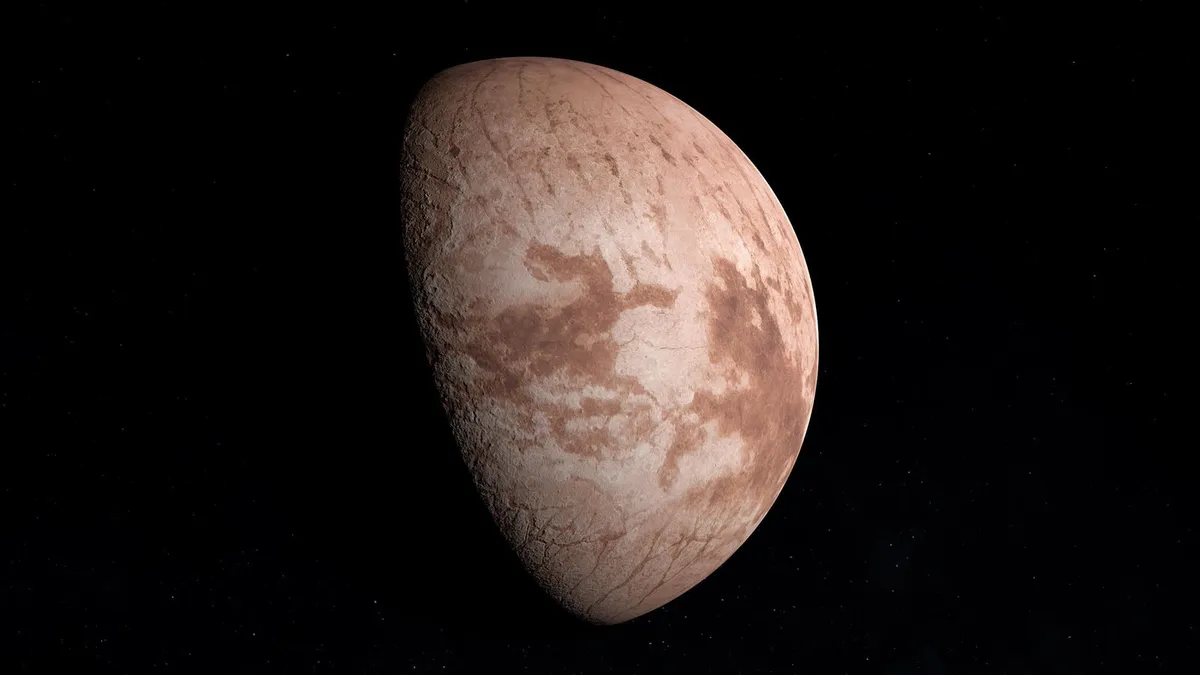
The solar system has recently welcomed a new member that has astronomers rethinking the very fabric of our cosmic neighborhood. Discovered beyond Neptune and Pluto, this unique object is designated as 2023 KQ14 and affectionately nicknamed “Ammonite.” The unexpected discovery of this trans-Neptunian object (TNO) could significantly alter our understanding of the solar system’s history. Here’s everything you need to know about this intriguing find.
Unlike Pluto and other well-known celestial bodies, Ammonite does not fit the definitions of a planet or even a dwarf planet. Instead, it is classified as a sednoid, a category that includes objects similar to Sedna, a dwarf planet candidate discovered in 2003. Like Sedna, Ammonite orbits beyond Neptune and possesses a highly eccentric orbit. Notably, Ammonite is only the fourth sednoid ever identified, joining the ranks of Sedna, 2012 VP113 (nicknamed Biden), and Leleākūhonua.
Based on its reflective sunlight properties, Ammonite is estimated to have a diameter ranging between 137 and 236 miles (approximately 220 and 380 kilometers). While this size is significant, it is notably smaller than Pluto, which has a diameter of about 1,477 miles (2,377 kilometers), and Earth, with a diameter of 7,926 miles (about 12,756 kilometers), highlighting the diversity of objects within our solar system.
In astronomical terms, the distance of celestial bodies is often measured in astronomical units (au). At the time of its discovery, Ammonite was located 71 au from the Sun, which is about twice the distance of Neptune (30 au) and Pluto (40 au). Moreover, Ammonite's orbit is highly elliptical, allowing it to reach distances as far as 432 au from the Sun. Completing one orbit around the Sun takes approximately 4,000 Earth-years.
Dr. Fumi Yoshida from the University of Occupational and Environmental Health and the Chiba Institute of Technology, who leads the FOSSIL project that discovered Ammonite, noted that it was found in a region where Neptune's gravitational influence is minimal. This suggests that extraordinary events may have shaped the conditions under which Ammonite formed.
The discovery of Ammonite may have significant implications for the Planet Nine hypothesis, which posits the existence of an undiscovered planet influencing the orbits of minor bodies in the outer solar system. Ammonite's orbit, which is oriented contrary to the clustering of other sednoids, challenges this theory. Dr. Yukun Huang from the Center for Computational Astrophysics (CfCA) of NAOJ stated that Ammonite's unique orbit diminishes the likelihood of Planet Nine's existence, suggesting that a planet may have once existed but was ejected from the solar system.
While the discovery of Ammonite complicates the Planet Nine theory, the possibility of its existence still lingers. It could be situated much farther out in the solar system or could be a ghost planet, having been ejected long ago, leaving only its gravitational legacy. Alternatively, the orbits of Ammonite and its fellow sednoids may result from the gravitational influence of a star that passed close to the solar system billions of years ago.
Ammonite was first detected using the Subaru Telescope's wide-field prime-focus camera, Hyper Suprime-Cam (HSC), in March 2023 as part of the FOSSIL project, which stands for "Formation of the Outer Solar System: An Icy Legacy." Its name pays homage to a fossilized cephalopod. Subsequent observations were made with the Subaru Telescope in May and August 2023, while the Canada-France-Hawaii Telescope's MegaCam was employed in July 2024 to refine its orbit. Remarkably, its orbit was tracked through archived images dating back 19 years, including those taken in 2014, 2021, and 2005.
Ammonite has earned the title of a “fossil” of the early solar system due to its estimated age of at least 4.5 billion years, nearly as old as the solar system itself. Numerical simulations conducted using NAOJ’s CfCA PC Cluster supercomputer indicate that Ammonite's orbit has remained stable over this extensive period. Around 4.2 billion years ago, the orbits of the known sednoids were similar, providing vital insights into the early configuration of the solar system.
The discovery of Ammonite transcends the mere addition of another distant object to the solar system’s catalog. According to Dr. Shiang-Yu Wang, a Research Fellow at ASIAA, “Ammonite’s orbit indicates that something sculpted the outer solar system very early on.” Whether this was due to a passing star or a hidden planet, Ammonite’s discovery brings us closer to unraveling the mysteries of our solar system's origins. As Dr. Yoshida pointed out, “Wide-field observations with the Subaru Telescope are steadily pushing back the frontier of exploration.”
Whether 2023 KQ14 will be officially named Ammonite remains to be seen, with the International Astronomical Union set to make an announcement in the future. As we continue to explore the cosmos, we wish you clear skies and wide eyes!